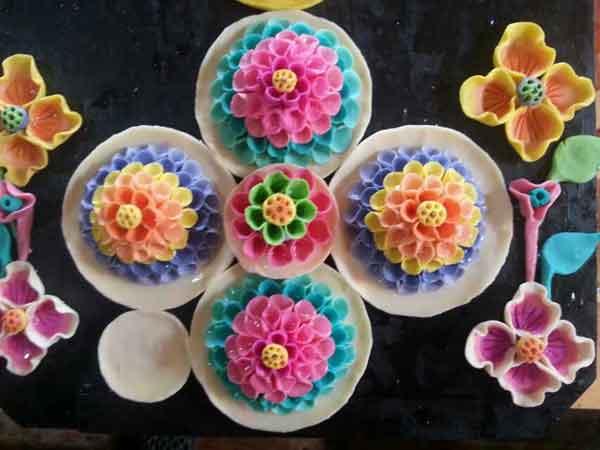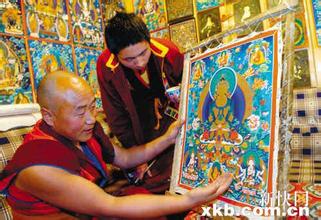Thangka to be classified by local standards in April
The “Thangka classification” local standards have recently been approved and are expected to be implemented in April, Tibet Daily reported.
Thangka, a unique art form, is part of the traditional Tibetan culture. It traditionally uses colors made from natural ores such as gold, silver, coral, turquoise, malachite, cinnabar and others, as well as plants like saffron, rhubarb, indigo and others. These natural ingredients ensure that Thangka artworks remain brightly colorful after hundreds of years.
Thangka is a type of satin-mounted scroll painting art that rose during the Songtsen Gampo era(617-650 A.D.). This type of religious art flourished with the rise of Tibetan Buddhism. Thangka’s forms and functions are closely related to the nomadic life style of Tibetan ancestors. It is a sacred object that farmers hang, carry and collect to pray for family safety.
Thangka has many different varieties and textures, but it is mostly drawn on cloth and paper. In addition, there is also barbola, embroidery, applique and other fabrics Thangka with some of them decorated with jewelry and jade, creating a perfect match.
Thangka cover wide-ranging themes including religion, biography, history, customs, astronomy and calendars, Tibetan medicine and pharmacology and others. It is, therefore, hailed as the Tibetan “encyclopedia”.
Tibet regional Institute of Standardization Research and Department of Culture are jointly responsible for the designation of the “Thangka classification” local standards. Thangka is classified focusing on three major aspects: materials and production methods, content and themes, and style and genre. It is further divided into drawing Thangka, barbola Thangka and gem Thangka according to its material and production methods; it also can be differentiated into iconic Thangka, story-based Thangka, Dharma teaching Thangka, Tibetan medicine Thangka, astronomy and calendar Thangka, folk custom Thangka, architectural Thangka and other types based on its content and themes; and based on its styles and genres, Thangka can be classified into Nepalese painting Thangka, Qiwu Gamba Thangka painting, Mian Tang Thangka painting, Qinzi Thangka, Gechi Thangka, Mian Sa Thangka and others.
Like a miracle in fine art, Thangka is known as the national treasure of Chinese paintings. It is also one of the precious intangible cultural heritages of Chinese folk arts.
Next the Tibet Autonomous Region Institute of Standardization Research will set about revising the local standards of “traditional hand-painted Thangka”.
Your Comment
Name E-mailRelated News
-
;
-
-

-
China’s first butter sculpture art gallery under construction in
China’s first Butter Sculpture Art Gallery is under construction in Tibet, and is expected to be opened in the National Day holidays this year.
-
-
-

-
Tibet boasts 3,000 Thangka painters
Currently, there are about 3,000 people engaged in the time-honored Thangka painting in southwest China’s Tibet Autonomous Region.
-
Based in Lhasa, Tibet Vista is a Tibet travel agency that specialized in Tibet permit, and Tibet tours for both private and group travelers at a local price!
•4 Days Lhasa City Group Tour from USD 460 •8 Days Everest Base Camp Group Tour from USD 850 •15 Days Mt.Kailash Group Tour from USD 1780 •2016 Tibet Train Tours from Beijing, Shanghai, Chengdu, Xining,etc










